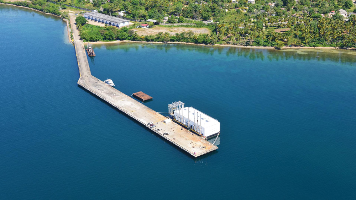Dominican Republic to transform Arroyo Barril and Barahona Ports for cruise ship tourism

Pedernales.- Following the successful completion of the first phase of the Port of Cabo Rojo in Pedernales, marked by the arrival of the first cruise ship, the Dominican government is now focusing on redeveloping the Arroyo Barril port in Samaná. The aim is to convert the existing loading dock into a modern infrastructure for tourist boats.
Jean Luis Rodríguez, director of the Port Authority, announced that the transformation of Arroyo Barril into a cruise ship port is slated to begin in 2024, with completion expected in 2025. The government also aims to finalize the transformation of the Barahona port within this year. The upgraded Barahona port will be equipped to accommodate medium-sized cruise ships, enhancing its capacity to welcome tourists.
Furthermore, Rodríguez emphasized that with these developments, the Dominican Republic is set to have eight ports capable of receiving cruise ships. Notably, four of these ports will be able to accommodate the largest and most modern cruise vessels, carrying up to seven thousand passengers.
These expansions and improvements signify a significant boost to the nation’s tourism infrastructure, positioning the Dominican Republic as a major cruise destination in the Caribbean.


















Are there any really big benefits in cruise tourism or is it minumum? Or is the payoff that those passenger later on get interested in visiting the country internally on a whole new trip?
The benefit is mininal in reality, and very localized. but in the agregate can be a good way to deliver some economic activity to local coastal areas.
Interesting article on this industry. Part of it below.
The cruise lines take large amounts of water from the islands where droughts are already a huge concern. The amount of water they need can total tonnes per cruise, for a mid-size ship, this can equate to around 750 tonnes every day while on large ships it can be as much as 1,500 tonnes.
ALL that is nonsense, no water is loaded at ports in DR. not trash is dispossed.